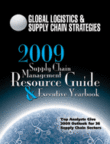
Visit Our Sponsors |
|
|
|
|
|
|
|
|
|
|
|
|
|
|
|
|
|
|
|
|
|
|
|
|
|
|
|
|
|
|
|
|
|
|
|
|
|
|

Sourcing and procurement are traditionally the functions responsible for ongoing cost reduction and containment in an organization. But like all functions, the need is based on the business requirements. As demand is reduced, the sourcing and procurement organizations usually become leaner. And while many organizations can quickly show where they have saved money in the past, lean requires a thorough analysis and opportunity assessment of every potential area for saving. AMR Research expects shared services organizations and outsourcing delivery models to be a crucial vehicle for reducing sourcing and procurement overhead expenses. This will be enabled by labor arbitrage, centralization of resources, tighter efficiencies in managed spend, improved process acumen and access to new technologies. These technologies, however, will see a shift from traditional license approaches to a more economical, integrated SaaS approach.
Companies that need to cut costs quickly would be wise to look at their sourcing and procurement IT strategy and investments. The traditional enterprise or behind-the-firewall software can cost a company millions from time of contract to deployment and is typically deployed over a 12- to 15-month time frame. A SaaS solution can be deployed in as little as 4 to 8 weeks with the ROI reached shortly thereafter. And the integration, once understood, can be far less of a challenge, both in time and money. The choice becomes clear for those needing immediate value: same costly, integrated technology with long implementation times vs. quick to access and deploy, with short integration and fast ROI solutions. Of course, in these tough economic times, quick ROI is almost mandatory. However, weighing the differences in strategies and total costs of install, deployment and ROI is critical, especially between IT and the line of business owner.
The Outlook
Over the past five years the market has grown 10 to 12 percent annually and led by ERP vendors with traditional licensed products. It should come as no surprise that these traditional licensed sourcing and procurement products are sold as large deals though not deployed for some period of time-often years.
Despite what appears to be great growth of license applications, the alternative deployment model market continues to experience higher growth year over year - 19 percent in the last year. The AMR Research alternative deployment model is defined as not perpetual or term software licenses, but subscription, hosted or SaaS. Over 90 percent of this model is SaaS in the sourcing and procurement market. AMR expects this trend of alternative deployment technology market growth to continue in 2009. AMR Research expects alternate technology deployment growth of about 22 percent, while traditional licenses will slow to a mere 4 to 5 percent in the sourcing and procurement market in 2009.
RELATED CONTENT
RELATED VIDEOS
Timely, incisive articles delivered directly to your inbox.

